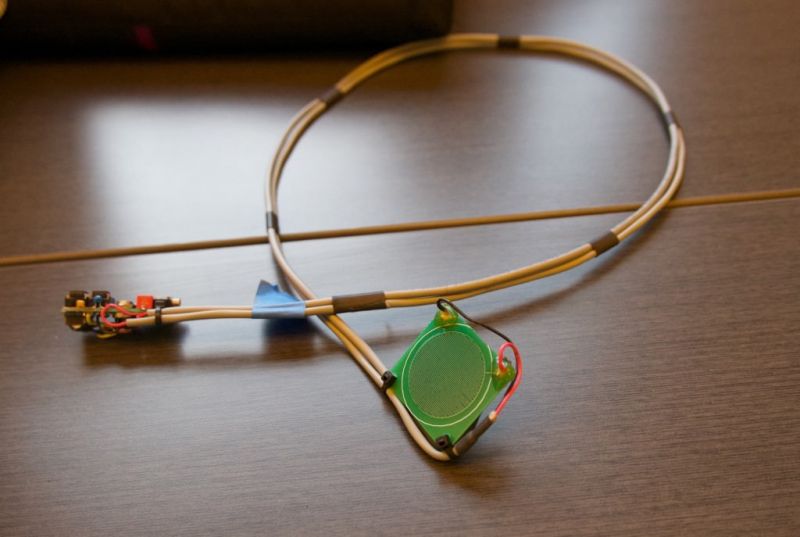New Water Contamination Sensor Could Be Revolutionary
Published on by Water Network Research, Official research team of The Water Network in Technology
An almost certainly revolutionary technology has emerged from UW-Milwaukee’s Water Technology Accelerator, in what might be seen as a product of serendipity or inspired intellectual curiosity.
 The UWM Accelerator is part of the Global Water Center, located in Walker’s Point, and its focus is on turning research into technology. And according to the creators, the technology was developed only because of a series of “accidents” they believe simply could not have happened anywhere else. The result is a water sensor that pushes testing for contamination to the frontiers of scientific imagination.
The UWM Accelerator is part of the Global Water Center, located in Walker’s Point, and its focus is on turning research into technology. And according to the creators, the technology was developed only because of a series of “accidents” they believe simply could not have happened anywhere else. The result is a water sensor that pushes testing for contamination to the frontiers of scientific imagination.
Marcia Silva is a professor and researcher with the College of Engineering and Applied Science and also the School of Freshwater Sciences at UWM. And she runs the lab called the Water Technology Accelerator or WaTA. She met Dave Rice, an engineer and president of Rice Technology LLC, when Rice accidentally received mail meant for WaTA.
Rice had been in the Global Water Center, “selling my abilities as an engineer,” he says, since winning a grant from the Water Council which landed him there. But after meeting Silva, he started to lend his talents in the WaTA lab.

Dave Rice and Marcia Silva. Photo by Graham Kilmer.
So, fast forward, Rice is in WaTa and he’s working on a bench right next to Silva. She’s working on detecting bacteria and he’s working on a sensor detecting suspended solids. Then one evening, as Rice puts it, they decide to try what Rice had been developing on Silva’s bacterial query.
“My God, it was so sensitive it was unbelievable,” Rice says.
So they continued refining the sensor and, voila, before their eyes they had one of the most sophisticated sensors for water contamination ever developed. The sensor can measure any type of contamination, even biological contaminations. Along with the sensitivity of the technology, it analyzes data in real time.
“The standard method for measuring contamination takes in excess of 24 hours. Very messy very inaccurate. Mine can measure it in seconds,” Rice says.

Water contamination sensor developed at the Global Water Center. Photo by Graham Kilmer.
Rice’s sensor is super sensitive to contaminants. For example, laboratories use various kinds of purified water, such as distilled, de-ionized and ultra-pure water. The sensor was capable of detecting the different types of water. When they discovered that, Silva said they began to fully understand the impact this technology could have. Like, maybe it could detect viruses, Silva thought.
Keep in mind, this was a sensor whose sensitivity was first discovered while detecting for bacteria in lab water. And now, at this part of the story, Silva was telling a skeptical Rice she thinks it might be able to detect viruses, too.
And it did. Silva was able to secure two different viruses for testing, and the sensor detected them both, each with unique signatures. And viruses are among the smallest disease-causing organisms.
And so the huge potential of the sensor was beginning to dawn on Rice and Silva as they imagined the great asset it could be to important industries and human health.
Water-intensive industries like fisheries and the manufacture of semiconductors, which are in just about everything, including the device you’re reading this on, can benefit from the efficient detection of contamination the sensor offers, Rice notes. The sensor can even be made into a tube so that it can measure fluids in real time as they pass through it like piping.
The World Health Organization estimates that at least two billion people around the world drink from a water source contaminated by feces. And that something like half a million people are killed by diarrhea caused by contaminated drinking water.
Continuous real-time testing, instead of sample testing, means discovering your drinking water has been contaminated before it makes it into your cup.
Media
Taxonomy
- Sensor Systems
- Chemical Analysis
- Contaminants